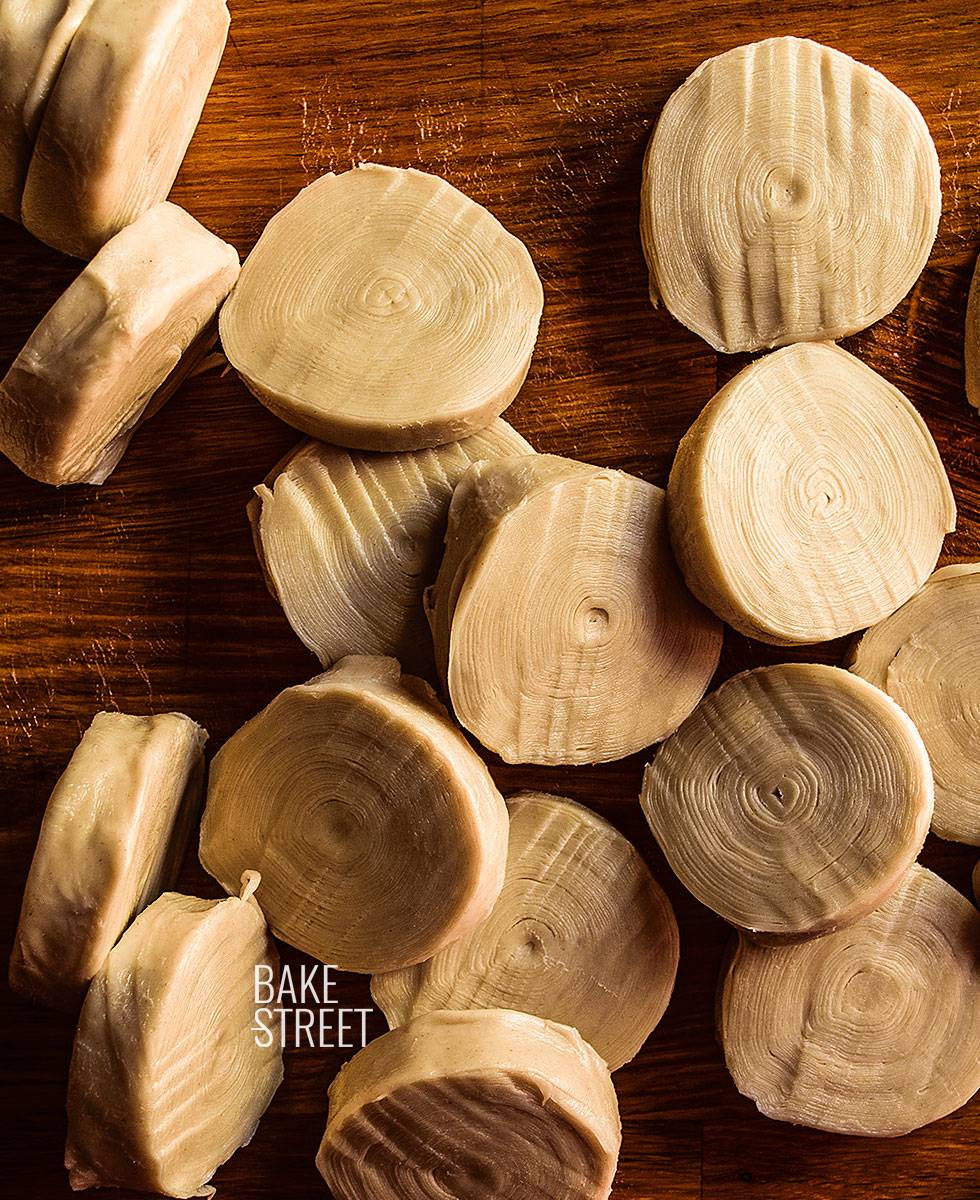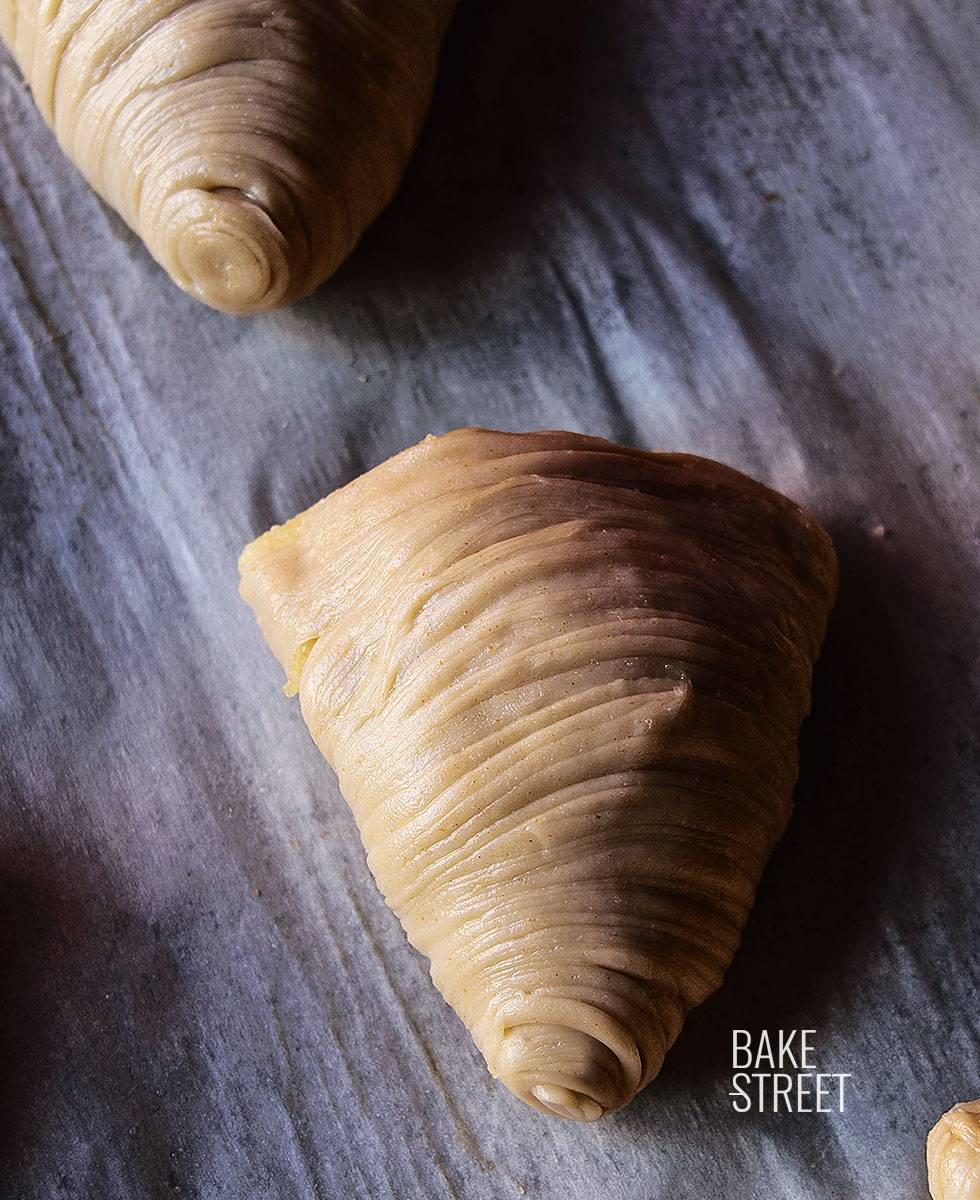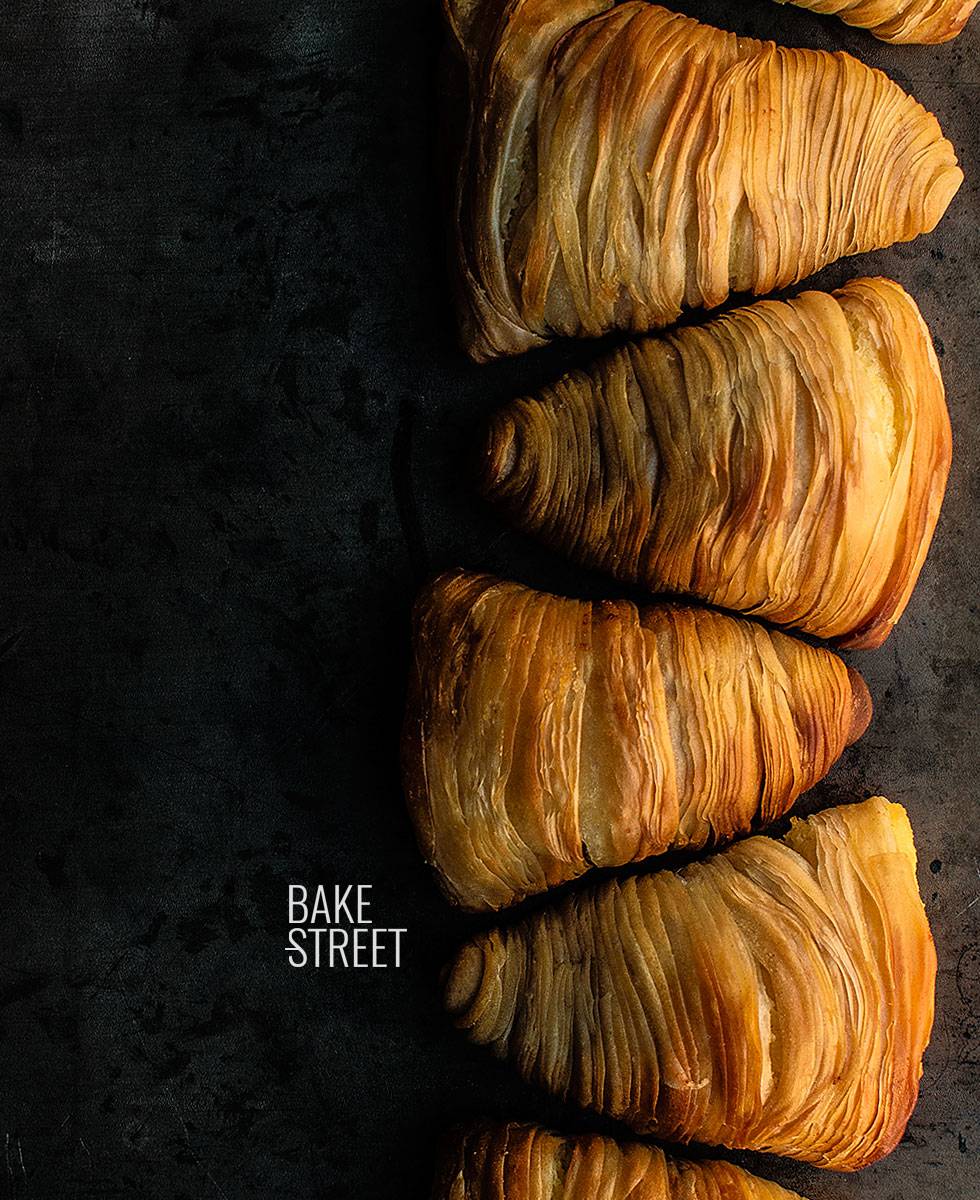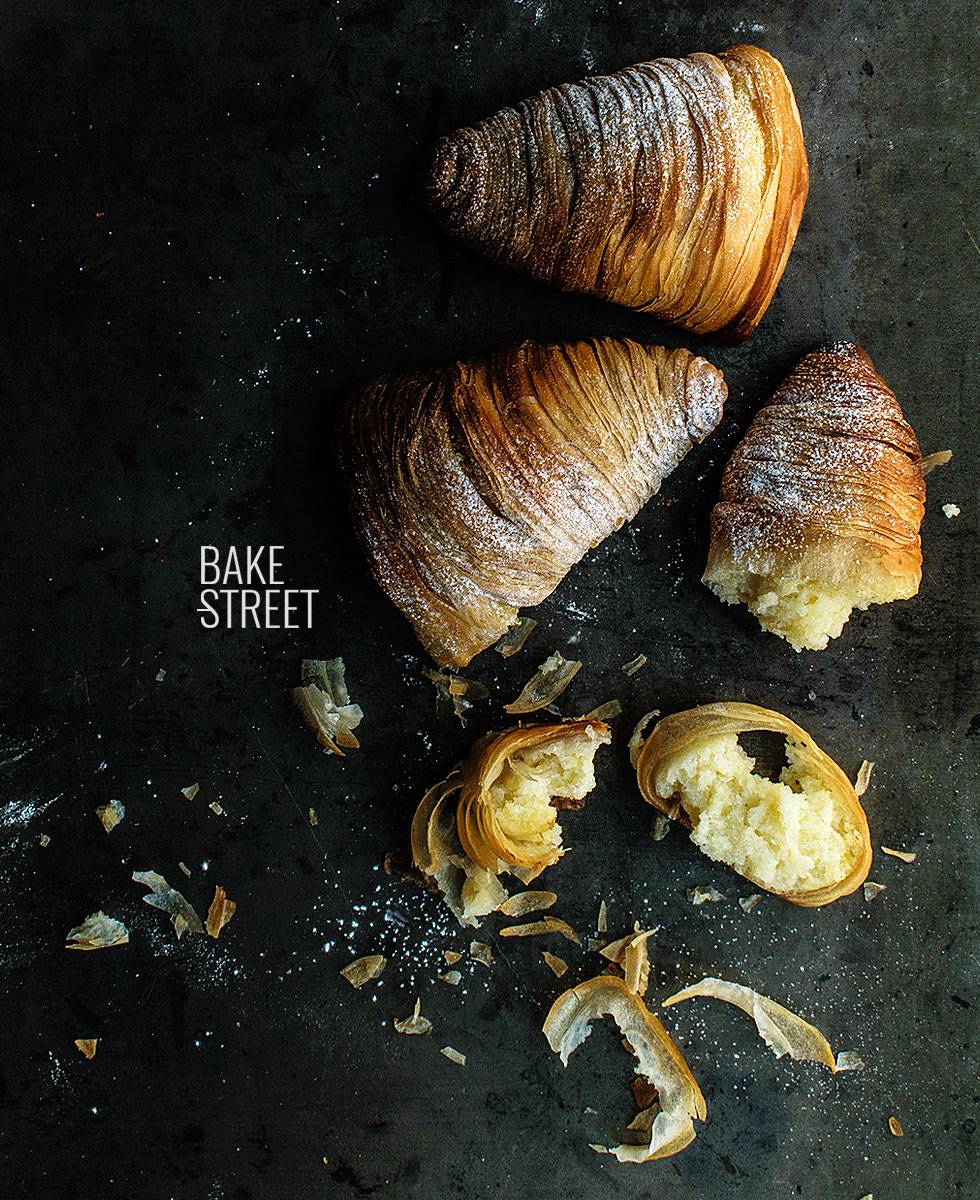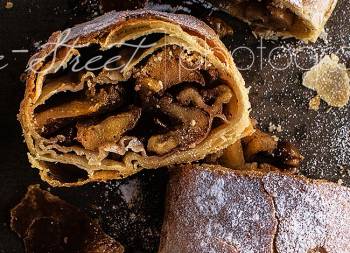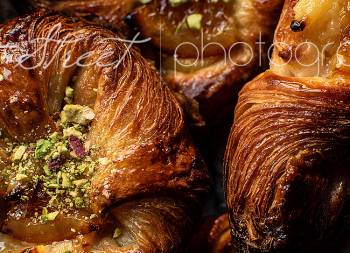
Sfogliatella Riccia {Video recipe}
The recipe that I bring you today I had in mind to make for about 4 years ago… It is one of those recipes that you are a little afraid to make at home, but that in reality can be carried out without problems. Today I will tell you how to make and enjoy the Sfogliatella Riccia.
This Italian sweet is characterized by its infinite thin and crunchy layers that cover a filling very aromatic, juicy and spongy textured. As you can imagine, the fact of being elaborated with thin and crisp layers leads us to think of a dough that we will have to work until it is translucent. But we made it with strudel, so there is no fear 😉
The origin of Sfogliatella.
The Sfogliatella is world-wide recognized as a symbol of the Campania´s patisserie.
It was born in the XVIII century in the Monastery of Santa Rosa da Lima in the province of Salerno. It is an elaboration that was the result of chance, like many other creations that today are authentic works of art.
In the convent’s kitchen, a preparation was made that consisted of wheat semolina with limoncello, sugar and nuts. This filling was then placed between two pieces of dough and baked, giving rise to a sweet called Santarosa, taking its name from the convent where it was created. This elaboration was very well received by the near inhabitants of the convent.
In 1818, a pastry chef named Pasquale Pintauro obtained the convent’s secret recipe and modified it slightly. He arranged the original stuffing in a very fine, curly dough, which was given the famous triangular shape of “lobster tail” that characterizes today’s sfogliatella.
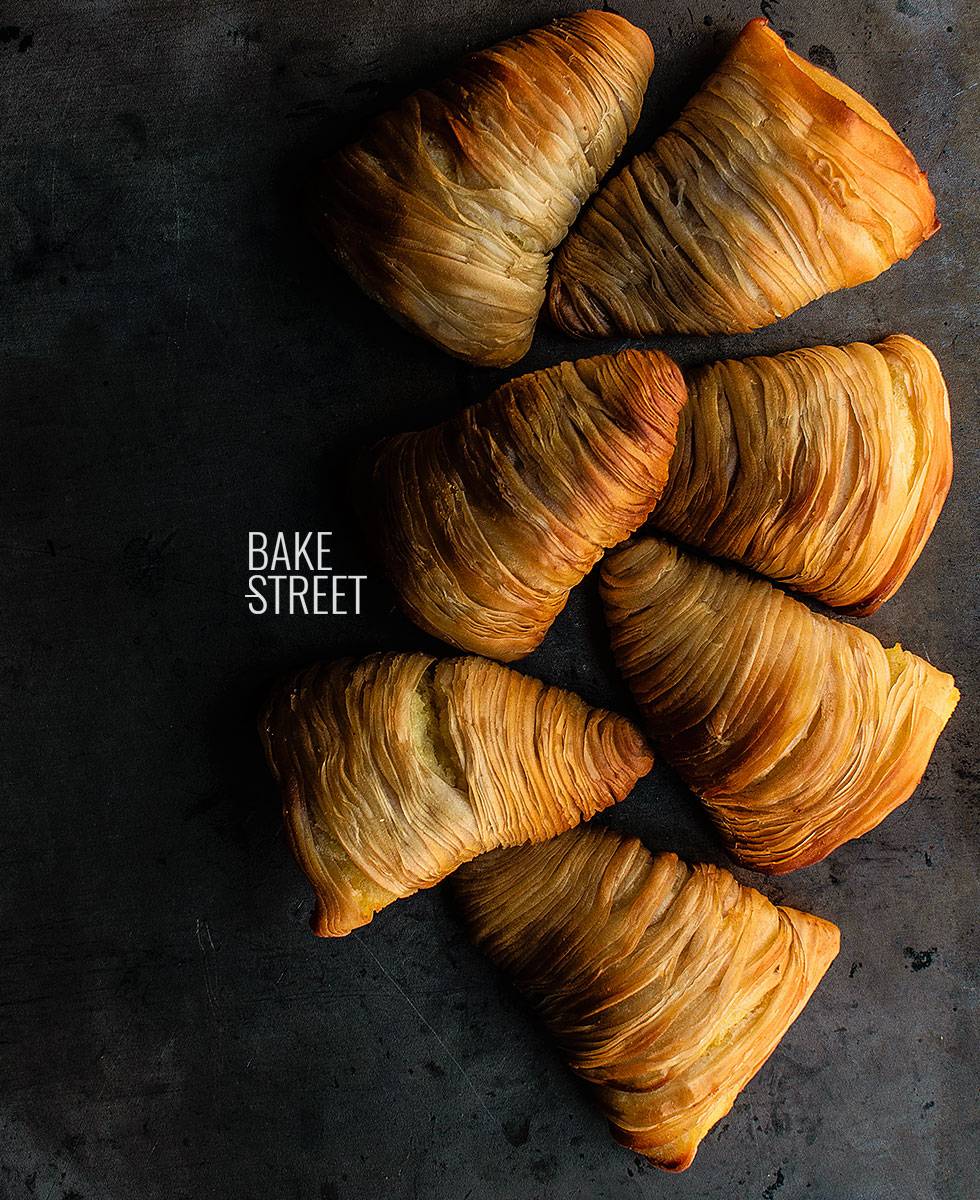
Sfogliatella Riccia should not be confused with Sfogliatella Frolla.
In Campania you can find two variants of sfogliatella, riccia and frolla. The first is the one that we will make, thin layers of dough that overlap with each other and we manage to keep them separated thanks to the lard.
On the other hand, sfogliatella frolla is made with a much less laborious dough (it can remind us of a pâte sablée) and is shaped in a similar way to a pie.
Both preparations are filled with a mixture of semolina and candied fruits.
Other types of sfogliatella.
In Abruzzo, specifically in Teramo, sfogliatella is also prepared to celebrate Christmas (which is when the tradition of consuming them, although we can do it all year round) along with other sweets. This variety differs from the previous one for two reasons: it is said that its dough is much thinner and its filling is more aromatic. This is done with local products such as grape jam, nuts, sugar, cinnamon and cocoa.
We can also find another variant in the United States called “aragosta” or lobster tail, made in the same way as sfogliatella riccia, but with a much sweeter filling that is usually: cream, whipped cream, chocolate….
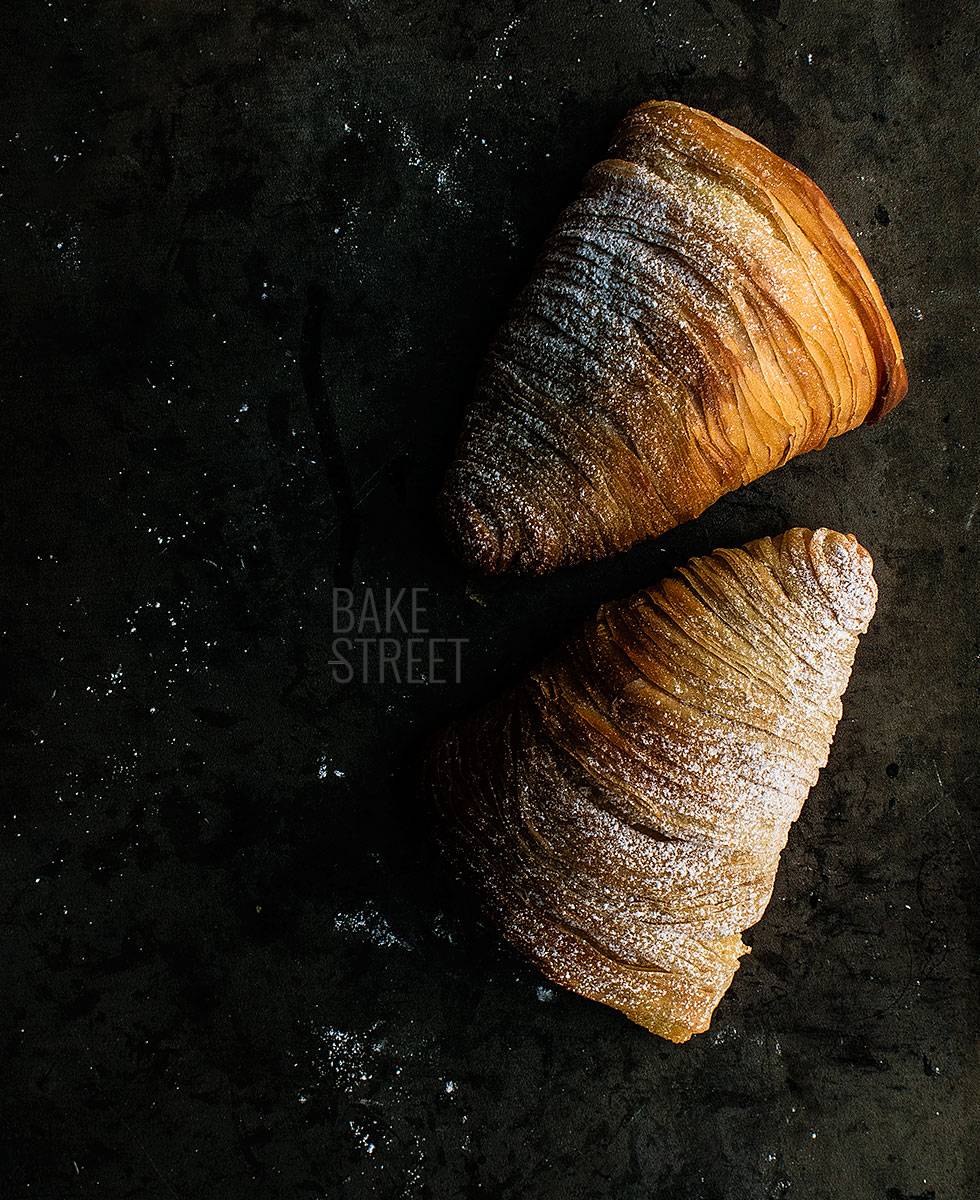
How should I prepare the dough for sfogliatella?
Traditionally, this dough must be made from a single piece. This can be easily feasible in a bakery, but at home it can be very complicated. Mainly not because of the inability to roll the dough through the pasta machine, but because of the thin thickness required to obtain good results. Not forgetting the large number of layers needed to obtain an attractive appearance.
If we have machinery to help us, we can prepare a large quantity of dough for a large caliber final roll. Bearing in mind that we are going to work at home with our hands (in spite of being able to do the first part in kneading machine if you wish) this point would be more laborious and complex.
For this reason we will work the dough and divide it into two parts that, later, we will rejoin to achieve a dough roll much wider than if we made the piece at once. I know it’s not the right thing to do, but after several tests and working with 17,6 oz (500 g) flour, it’s the best option I found getting the best results. We were eating sfogliatella at home for several days!
Ingredients
FOR THE DOUGH:
- 17,6 oz (500 g) high-strength flour (I have used Huracán de Ylla W=340, but you can use Manitoba)
- 7,75 oz (220 g) water
- 0,7 oz (20 g) honey
- 0,17 oz (5 g) salt
- 5,3 - 6,3 oz (150-180 g) lard
FOR THE FILLING:
- 14,6 oz (415 g) water
- 5 oz (140 g) semolina
- 5 oz (140 g) ricotta cheese
- 5,3 oz (150 g) sugar
- 1 large egg
- 1,6 oz (45 g) candied orange*
- 1 tsp vanilla extract
- pinch of cinnamon
- pinch of salt
* Here you can see how to make them at home.
Instructions 20 pieces
FIRST DAY
Make the dough for sfogliatella.
- In a bowl add the flour together with water, salt and honey.
- Mix with the help of your hands and work to unify the dough. At first we will get a brittle mixture, don't worry, you have to keep kneading it.
- Dump the dough on a work surface and knead. This step is the hardest, undoubtedly requires a lot of kneading time, combining with rest if you wish, to achieve a homogeneous and amalgamated dough.
- Once we have a compact and homogeneous dough, shape a disc (instead of the boule that you can see in the video), grease with lard all over the surface and cover with film.
- Let stand at room temperature for 3 hours.
Stretch the dough.
- Before rolling the dough through the pasta machine, stretch it with a roller and try to give rectangular shape. We will give a thickness narrow enough to fit through the rollers of the machine.
- Roll the dough piece through the pasta machine, fold it up like a triptych (if it shape is not rectangular) and roll it back through the rollers.
- We will go through all the levels of the pasta machine until we reach the narrowest. As we stretch and thin the dough, it will get a longer length. Handle it carefully throughout the entire process.
- Once we have stretched to the thinnest thickness, roll the dough.
- Divide it into 2 equal pieces and one of them we cover it with film while stretching the other one.
Make the final stretch.
- Prepare a bowl with the lard, set aside.
- Take one of the dough rolls and stretch keeping the other end rolled.
- Spread the lard all over the surface and slide your fingertips under the dough to stretch it even further. We must obtain a translucent dough in the same way as when we make strudel.
- Roll the dough over itself while stretching to obtain the thinnest possible dough thickness. Each time we unroll the dough, we must spread it with lard before we proceed to stretch it again and roll it up.
- Once we have rolled and stretched all the dough, we take the other roll we had reserved.
- Joins both ends and proceed in the same way as with the previous roll. We must get a single roll of dough.
- Once we have finished rolling it, spread lard all over the surface and cover it with film.
- Refrigerate for 24 hours.
SECOND DAY: IN THE MORNING
Cook the semolina.
- In a medium saucepan pour the water together with the salt and place it in a medium heat.
- Once the water breaks to boil, add the semolina. Don't do it all at once, sprinkle it with a spoon. This will prevent lumps from forming.
- Mix with the help of a spoon, we will get a thick paste.
- Cook in medium heat for 5 minutes.
- Remove from the heat and let cool completely.
Make the filling.
- In a medium bowl add the cooked semolina with ricotta cheese, egg and sugar. Mix until a homogeneous paste is obtained without lumps. If you do it with your hands, the result will be much better.
- Add the candied orange together with the vanilla and cinnamon, mix again to distribute evenly.
- Cover with film and refrigerate for 4 hours.
Shape the patties.
- Remove the dough from the fridge, cut slices 0,4 inch (1 cm) thick.

- Flatten the disc with the palm of your hand and with the help of your fingers, we will slide the disc between it to give amplitude while tuning a little more.
- Fill generously with the semolina filling and close the shell. It is not necessary to seal the upper part, folding it will be more than enough.
- Place on a tray lined with baking paper and repeat the process with the following pieces.

Bake.
- Preheat the convection oven to 355ºF.
- Place at medium height and bake for 30-35 minutes. They must acquire a golden color on the outside.
- Remove and let cool slightly on a rack.
- Before serving we can sprinkle with icing sugar if desired.
Notes
- Is it essential to use high strength flour (Manitoba) for this recipe? Yeah. The recipe is designed to work at the specified proportions. Furthermore, we must not forget that the characteristics of this type of flour are what will guarantee us a successful result.
- Don't be tempted to add more water than I tell you to the dough. It is a very hard process to carry out, but in the end it is possible to amalgamate the dough. It takes time, but especially muscle!
- What happens if I add more water to the dough? It'll lose shape when we make the discs. Trust the proportions, the result will be good.
- The lard that covers the dough together with the 3 hours of the first rest, finish improving the final texture of the dough making it much more malleable.
- The recipe does not carry yeast is it a dough that does not need rise? No, it doesn't have to rise. In its elaboration process, it can remind us of strudel, a dough that doesn't require any proofing, just rest.
- The first rest of 3 hours is important to carry it out so that the protein is well hydrated and allows us to work the dough much more easily.

- Do I have to rest the dough for 24 hours? Yes, it is important to let the dough rest so that it is very cold when we have to handle it.
- And if instead of 24 hours, does it rest 48 hours? It's okay, you can leave it in the fridge for a couple of days if you have any unforeseen problems.
- It is a dough that dries easily, whenever you are not working it, cover it with film.
- It is very important that you stretch the dough well, as I specify. Failure to do so will result in very hard layers that are impossible to eat.
- Can semolina be substituted by another ingredient? No, the truth is that I don't find an ingredient similar to this and that gives us the same result.
- Can I use rimacinata instead of semolina? I imagine that in this case there will be no problem since the difference between the two is the size of the milling.
- When you cook the semolina, remember not to add it at once but sprinkle it. In this way you will avoid the formation of lumps, impossible to dissolve...
- Do not use any other ingredients in the place of lard, it will not be the same. By this I mean don't use butter or substitutes.
- I have prepared the sfogliatella with orange candied, on one occasion, and lemon candied in another, although the traditional is the first. In both cases the result is spectacular.
- You can bake it without convection if your oven doesn't have it. But I wanted to do it in the same way as baking croissants and Danish dough to make the layers stand out.
- These sweets don't keep very well from one day to the next, they lose their crunchy texture. The ideal thing is to consume them the same day that they are elaborated.

Sfogliatella Riccia is a true delicacy that we should consume if possible temperate or in the same day. After cooling and/or resting too much, it loses much of its charm.
It is a sweet that does not abuse the sugar at all, the sweetness point is quite tight enough that together with the creaminess of the filling with semolina and ricotta, together with candied citrus fruits, the result obtained is extraordinary.
If you want to be entertained this weekend, I've already left you some homework!
Big hugs,
Eva
Sources: Wikipedia Italia, Taste from Abruzzo, Nonna Box
